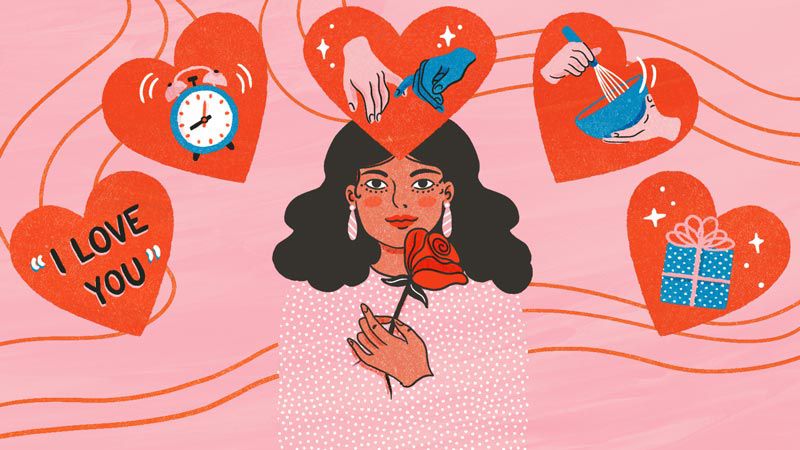In the 1990s, the book “The Five Love Languages” tried to teach us how different behaviors communicate our commitments to one another. Those languages were words of affirmation, quality time, gifts, acts of service, and physical touch. Each different language had the ability to bring someone closer to their loved one, showing the depth of their feelings through behavior. However, each language also had the ability to distance people from one another, if those people “spoke” different languages. Since then, the concept of love languages has been expanded, commentated upon, criticized, and even made into humor (I can’t tell you how many Reels or Instagram posts I come across where someone says, “Tater tots are my love language,” or something similar).
At its core, the philosophy of love languages focuses on the way we translate spiritual commitment into behavior. And it becomes our job to learn to recognize that commitment through behavior in others. Sometimes it’s easy; we “speak” the same love language. Sometimes it’s harder; we have to work to recognize the love language in others. Sometimes it feels nearly impossible, especially when we don’t see the behavior directly, only read about it in stories.
This week, as we come to the end of Abraham and Sarah’s lives in our Torah reading, I feel myself especially drawn to seeing the ways they express their love and commitment in a text that often omits mentions of emotion. Isaac, their son, is the first to be described as loved or loving. Abraham and Sarah, however, seem to express themselves in other ways. Sarah gives her love through acts of faith – her faith that Abraham’s plans would keep them safe, her faith in God’s promise of having a child in her later years, and her faith that the bond that she had with her son would bring him comfort even after her death. Abraham gives his love through acts of sacrifice – his sacrifice of his ancestors to fulfill God’s promise, his sacrifice of his marriage to protect his wife in Egypt, his sacrifice of both of his sons so that they may realize their own role as fathers of nations. Though neither Abraham nor Sarah was able to express their love and commitment in words, their deeds (when viewed through the lens of love languages) begin to make up for their shortcomings.
I especially see Abraham’s acts of love through sacrifice in the opening of our portion, Chayei Sarah. Sarah has just died, and Abraham is looking for a place to bury her. He comes upon the Hittites, who offer a cave for free. Abraham, however, insists on paying full price for the land. Some view this act as a way for Abraham to stake his and his descendants’ claim on the land, to prove that they have ownership over a piece of the Promised Land. But what if this isn’t just Abraham making a transaction, or trying to sway an economic system that will have an impact for generations to come? What if this act was Abraham’s final act of love towards Sarah? That in this last act, Abraham wanted to give the most that he was able to give, that he wanted to give what Sarah wasn’t able to have in life – permanence and comfort. By insisting he pay full price for her cave Abraham could complete an act of living for the dead that would one day echo in Abraham Lincoln’s Gettysburg Address: one last full measure of devotion.
We too have our love languages, behaviors that are inspired by the depth of our love, behaviors that communicate what words struggle to do. We too have multiple gifts of self that we give to partners, children, parents, friends, co-workers, strangers, and communities. And it is those acts of love that serve as the foundation for the most meaningful relationships and communities.
Even here at Jeremiah, we are not simply a community because we ended up in the same place at the same time together. We are not a community because it was forced upon us by need or circumstance. We are a community because we choose to be one, and we show our commitment to one another through multiple love languages. Words of affirmation, time, gifts, acts of service, and comforting touch…these are only a few of the ways we express our love for one another and the bond we have built with our community. These are the acts that we rely upon to sustain our community. These are the acts of love that we are grateful for every day, and that bring us all together in our search for permanence and comfort.

